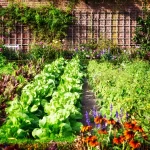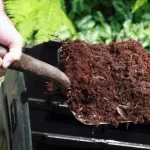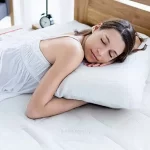
As pollinators move through their environment, they are constantly scanning for flowers that appeal to them. Color is a key factor. Bees favor blue, yellow and white flowers. Hummingbirds are drawn to tube-funnel shaped flowers in shades of orange, red and pink.
Planting flowers that bloom from early spring to late fall will ensure pollinators have a continuous food source. Make sure to include plants with a wide range of bloom shapes, colors and heights.
Plant a Variety of Flowers
As gardeners, we love the variety of colors, scents and textures that flowers offer. Bees love them, too, and are most often attracted to blue, white, yellow and purple blooms.
Plant a wide range of flowers to attract pollinators year-round. Include flowers that bloom in early spring, late spring, summer, autumn and winter (if possible in your climate).
Aim for diversity of flower shapes and sizes. Most bees are able to forage on plants with different-shaped flowers, so including a mix of shapes will help ensure that you’re providing pollen and nectar for a variety of bees.
Research shows that solitary bee species are more likely to live in the nooks and crannies of your vegetable garden than in the open spaces of a flower garden. Adding a Flow pollinator house to your garden mimics the cavities that these native bees use in the wild and offers a cozy spot for them to raise their young.
Encourage Native Bees
When you enjoy a juicy tomato, a fresh strawberry or seed-rich zinnia, remember that it’s pollinators such as honey bees and native bumblebees who made them possible. These bees are generalists, visiting a wide range of flowering plants for the rich food and shelter they provide.
But if you want to attract even more bees, choose plants they love. Plant a variety of blooms that grow singly and in clusters. Include tube and trumpet-shaped flowers, such as those found in foxglove or canna lilies, alongside flatter umbel-shaped blossoms, like achillea or yarrow.
Bumblebees are especially fond of single flowers with more petals, rather than double flowers, which produce less pollen and get in the way.
Skip the pesticides, which can kill bees as well as the pests you’re trying to control. Consider letting some of your lawn grow long and mowing it only when it’s full of flowers, such as dandelions or clover. And be smart about garden clean up chores, avoiding doing too much in the spring and fall when many native insects are nesting or overwintering.
Provide Water
While flowers are usually the first thing that come to mind when thinking of creating pollinator habitat, pollinators also need water. Water sources like shallow trays lined with pebbles, small garden ponds and birdbaths offer a place to drink or cool down for pollinators such as butterflies, flies, beetles and moths.
Water is essential to a pollinator’s diet because it contains much of the moisture they need. It is especially important for hummingbirds, who often hover near flowers and are more likely to be dehydrated than other pollinators.
Look for plants that bloom throughout the season to provide a continuous source of nectar and pollen for your pollinators. Different pollinators prefer different shapes and colors of blooms, so plant flowers with a variety of sizes and colors to attract more diverse pollinator populations. Be sure to feed your flowering plants regularly with Miracle-Gro® Brilliant Blooms flower food*, and make sure your garden has a wide range of colors and heights to attract a variety of pollinators.
Provide Shelter
When you plant your garden with pollinators in mind, you’ll create a welcoming habitat that provides food, water and shelter. And you can also encourage pollinators to visit your garden with less-aggressive pest management methods, such as choosing plant varieties that are resistant to fungal diseases and carefully picking out caterpillar host plants for butterfly species.
Planting in groups or clumps makes it easier for pollinators to forage because they don’t have to wander around to find what they need. And leaving areas of bare soil or leaf litter – as opposed to mulching every bed — gives solitary bees and other ground-dwelling insects a place to hide and build their nests.
Providing a variety of flower shapes and sizes will help attract more pollinators because different species have specific preferences. For example, hummingbirds love long, tubular flowers while bees favor round blooms. And offering a range of blooming times is important because many species are only active at certain times of the year.











